ISSN : 2348-9502
American Journal of Ethnomedicine
Studies on Ethnomedicinal Uses and Formulation of Herbal Drugs from Medicinal Plants of Ranchi District- A Survey
Department of Biotechnology, Marwari College, Ranchi, Jharkhand, India
Abstract
Introduction: Plants have been the basis for medical treatments through much of human history, and such traditional medicine is still widely practiced today. Modern medicine recognizes herbalism as a form of alternative medicine, as the practice of herbalism is not strictly based on evidence gathered using the scientific method. Modern medicine, does, however, make use of many plant-derived compounds as the basis for evidence-tested pharmaceutical drugs, and phytotherapy works to apply modern standards of effectiveness testing to herbs and medicines that are derived from natural sources.
Objectives: To examine the traditional therapeutic properties of indigenous medicinal plants in urban and rural location of Ranchi, North Eastern India. Methods: In the present study ehnomedicinal survey was conducted in various urban and rural locations of Ranchi District of Jharkhand state during March 2009 - Sep2010.
Results: The people of the study area have expertise in utilizing different plant parts as medicine for the treatment of all sorts of aliments. This paper additionally deals with the enlistment and documentation of traditional therapeutic properties of 74 indigenous medicinal plants, which are in practice for the treatment of diseases by inhabitants of the study area. The information on ethnomedicinal formulation is based on the interview with local traditional herbal practitioners, Vaidhya and other knowledgeable persons, who prescribe their herbal preparation to treat various ailment. Conclusion: The study exclusively examined many novel plants and plant products based on its medicinal uses and properties. This survey needs to be integrated with healthcare system (research & industrial level) to explore new drug formulation for medicinal upgradation of humans.
Keywords
Medicinal plants, Herbal treatment, Folklore, Aliments.
Introduction
Majority of world population relies on traditional medicines for primary healthcare, most of which involves use of locally available plants. In India all most 95% of the prescription are plant based in the traditional systems of Unani, ayurveda, Homeopathy and Siddha [1]. Ancient ethnic communities around the world have learnt to utilize their neighborhood herbal wealth for curative as well as offensive purposes [2]. Due to lake of literacy, their knowledge on plants developed often at the cost of their dear life through centuries old experience could be perfectly documented and it had rather descend from one generation to another as a domestic culture heritage [3].
Modern medicinal facilities are now making a rapid penetration into the areas which have been centers of herbal use as medicines for ages as their tradition. Such activites may result in disappearance of traditional use and knowledge herbal wealth. It is therefore important (as bioethical mater) that the valuable knowledge from locally folklore, in particular, of the medicinal uses of locally available plants to treat different diseases be recorded [4].
Many attempts have been made on inventarisation of medicinal plants currently being used for treatment of ailments in different parts of India such as Nayar [5] reported medicinal plants of Eastern Ghats, Nagaraju and Rao [6] enlisted medicinal plants of Tirumala Hills and the plants crude drug of Rayalaseema (A.P.). Similarly Jain et el. from Raipur [7], Kumar et al., from Bikaner [8], Bondya et al., and Chandra et al. from Ranchi [9,10] have studied on medicinal plants and their traditional uses.
Ranchi district of Jharkhand state is immensely rich in biodiversity and ethnomedicinal information. Ranchi the capital of Jharkhand lies between 22° 30, N - 23° 30, N latitude and 85° E-86° E longitude. It is located at an altitude of 654 m above sea level. The annual average rainfall in Ranchi district is about 1530 mm. The whole district is covered by red sandy soil. Jharkhand state is immensely rich in biological diversity and traditional knowledge with about 23,605 sq km forest area, which is 29% of the total geographic area. It is also rich in ethnomedicine and about 80%people live in rural are [10]. The population compromising various ethnic groups and indigenous mass making it hub of horopaths, Pahans, Vidhya and other having traditional knowledge about medicinal uses of various plants found in ambience. The current trend of life style is resulting in gradual loss of valuable indigenous therapeutic knowledge (Homeopathy) associated with ethnic culture in the area in particular [3].
The present communication records documentation and compilation of fragmentary ethnic knowledge about the medicinal and nutritional indigenous plants. In the paper, attempt has been made to document the folklore formulation so that in near future it may lead to the discovery of new medicines and help in protecting their IPR.
MATERIAL AND METHODS
Ethnomedicinal survey was conducted during Mar 2009 – Sep 2010 in 5 different blocks of Ranchi district namely, Kanke, Ratu, Mander, Bero and Lapung. The requisite ehnomedicinal properties of different plants were recorded through direct interview with the local people and practitioners on the basis of their traditional knowledge and the folklore formulation, which they were prescribed to their patients. After documentation, use of formulation was cross checked and confirmed. The plants were identified with the herbaria of Ranchi University and Department of Forestry of Birsa Agriculture University, Ranchi, Jharkhand.
Scientific botanical identification of the collected plants was done by referring to Haines [11], Hembrom [12], Prasad [3] and Chandra [10]. Queries were asked on the basis of readymade questionnaire13 to know the traditional knowledge used in practice by local people. All collected specimen were deposited in the herbarium of Department of Botany, Marwari College, Ranchi, Ranchi University for future references.
RESULTS & DISCUSSION
The documentation has been done on the basis of information extracted from the knowledgeable local practitioners, the patients who have cured and the plant collectors of the area. A list of 74 plants and their uses has been presented in Table 1 in alphabetical order giving their Botanical name, followed by local name, family and medicinal uses.
Table 1. List of important medicinal plants in Jharkhand and their uses
| S. No. | Latin Name | Local Name | Uses | |
|---|---|---|---|---|
| 1 | Abrus precatorius |
Karjani | Seed - | Purgative, emetic, aphrodisiac, poultice of seeds used as suppository for abortion |
| Root - | Emetic, alexiteric | |||
| Leaves - | Juice from fresh leaves in said to remove spots of leucoderma | |||
| 2 | Acacia arabica | Babul | Fruit - | Ground fruit mixed with sugar is given him weakness by tribal |
| Bark - | Astringent, demulcent | |||
| Gum - | In dry cough, diarrhea, dysentery and diabetes mellitus | |||
| 3 | Acacia catechu | Khair | Bark | Astringent Kath |
| 4 | Achyranthes aspera 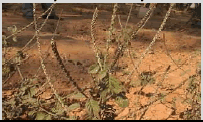 |
Apamarg | Plant - | Purgative and diuretic, used in dropsy, Piles, Boils, Skin eruptions, Colic, Snake-bite etc. |
| Root - | Astringent, used in Pyorrhea | |||
| Seed - | Emetic | |||
| 5 | Adina cordifolia | Karam | Bark - | Febrifuge, Antiseptic, also used to kill worms in sores |
| 6 | Ailanthus excelsa | Ghorkaranj | Bark - | Aromatic, Tonic, Febrifuge, Expectorant, Antispasmodic and Astringent; used in Rheumatism also. |
| 7 | Aegle marmelos | Bel | Fruit - | Pulp of ripe fruit aromatic, cooling and laxative while half ripe fruit Astringent, Digestive and Stomachic |
| Root - | Used in intermittent fevers, and as bark fish poison. | |||
| 8 | Alangium Lamarckii | Dhela | Leaves - | As poultice in rheumatic pain |
| Bark&root | In Jaundice | |||
| Root Bark | Purgative, anthelmintic and useful in fever and skin diseases. | |||
| 9 | Albizzia lebbek | Siris | Plant - | In snake-bite and scorpion sting, infusion given in anemia and for curing itch. |
| Bark&See d | Astringent, tonic and restorative, given in piles and diarrhea | |||
| Root bark | In Powder form used to strengthen gums in night-blindness. | |||
| 10 | Albizzia procera | Safed Siris | Leaves - | Used as insecticide, made into poultice and applied to ulcer |
| 11 | Alstonia scholaris | Chatni | Bark - | Tonic, alternative, febrifuge, useful in diarrhea dysentery and snake- bite Milky |
| juice - | Applied to ulcer | |||
| 12 | Audrographis | Kalmegh | Plant - | Tonic febrifuge, alternative anthelmintic paniculata |
| 13 | Artocarpus lakoocha | Barhar | Seed - | Ground and given to children as purgative |
| 14 | Asparagus racemosa |
Satawar | Root - | Decoction used by tribal in fever, refrigerant, demulcent, aphrodisiac, antiseptic, alterative, galactagogue. |
| 15 | Azadirachta indica | Neem | Leaves - | Carminative, expectorant, anthelmintic, antidotal, diuretic and insecticidal; externally applied in skin diseases as antiseptic and stimulant. |
| Bark - | Bitter tonic, astringent, alterative, anthelmintic, | |||
| Roots & Trunk | Antispasmodic and stimulant | |||
| Gum - | Stimulant and demulcent | |||
| Fruit - | Used in urinary diseases, piles, leprosy, intestinal worms etc. | |||
| Seed oil- | Antiseptic dressing in skin diseases | |||
| 16 | Bauhinia purpurea | Koenar | Bark - | Astringent |
| Root - | ||||
| Flowers- | Laxative | |||
| 17 | Bauhinia retusa | Kathal | Gum - | Emmenagogue, diuretic |
| 18 | Bombax ceiba | Semal | Root - | Tonic, stimulant emetic, aphrodisiac |
| Leaves - | Boiled and given with sugar in case of weakness | |||
| Gum - | Aphrodisiac, demulcent, haemo- static, astringent, tonic alterative. | |||
| 19 | Boswellia serrata | Salai | Gum - | Diaphoretic, diuretic, astringent, emmenagogue, tonic |
| 20 | Buchanania lanzan | Piar | Oil - | Tonic a substitute for almond oil in native medical preparations |
| Gum - | Used in diarrhea | |||
| 21 | Butea frondosa | Palas | Leaf - | Astringent, tonic |
| Seed - | Anthelmintic | |||
| Gum - | Astringent | |||
| 22 | Calotropis gigantea |
Akaon | Leaves - | Used in dropsy and enlargement of abdominal viscera, smoked or smoke inhaled in asthma & cough, decoction for extracting guinea worms. |
| Root bark | Cholagogue, diaphoretic, emetic, alterative and diuretic. | |||
| Flower - | Tonic, stomachic, digestive and expectorant. | |||
| Latex - | Abortifacient as well as used in leprosy, dropsy, rheumatism, etc. | |||
| 23 | Carissa carandas | Kanwar | Fruit - | Appetizer, ground green fruit with salt taken in dysentery |
| 24 | Cassia fistula | Amaltas | Leaves- | Laxative, tonic, febrifuge, purgative |
| Seeds & Root Bark Root - | Astringent, tonic, febrifuge, purgative. | |||
| Flower - | Purgative | |||
| Fruit - | Cathartic also applied in rheumatism | |||
| Seeds - | Emetic. | |||
| 25 | Chloroxylon | Bharhul | Leave - | Used for cure of sores in cattle swietenia |
| 26 | Clerodendron infortunatum | Bhant | Leaves - | Tonic, antiperiodic, febrifuge, vermifuge, also used in skin diseases and as substitute for chireta |
| 27 | Dalbergia latifolia | Kala Sissoo | Leaf - | Boiled and infusion taken in weakness |
| 28 | Emblica officinalis | Amla | Fruit - | Richest source of vitamin `C', refrigerant, antiscorbutic, diuretic, laxative, astringent, stomachic, blood purifier, appetizer. |
| Seed - | Infusion used as eye-wash in ophthalmic diseases. | |||
| 29 | Eugenia spp. | Jamun | Bark - | Astringent, decoction used for gargles, fresh juice used in diarrhea of children |
| Fruit - | Juice (fresh as well as vinegar) used as stomachic, carminative, diuretic. | |||
| Seed - | Used in diabetes. | |||
| 30 | Euphoria hirta | Dudhi | Plant - | Vermifuge and expectorant |
| 31 | Ficus benghalensis | Bar | Leaves - | Poultice applied to abscesses |
| Bark - | Tonic, astringent, used also in diarrhea and diabetes. | |||
| Seed - | Refrigerant, tonic | |||
| Milky - | Applied externally for pains in rheumatism juice and lumbago | |||
| 32 | Ficus religiosa | Pipal | Young & Shoots | |
| leaves - | Purgative | |||
| Bark - | Astringent, infusion taken internally in scabies | |||
| Fruit - | Laxative | |||
| Seeds - | Cooling and alterative. | |||
| 33 | Flacourtia ramontchi | Katai | Fruit - | In jaundice and enlarged spleen |
| Gum - | Given with other ingredients in cholera. | |||
| 34 | Helicteres isora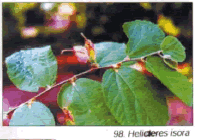 |
Aintha | Root - | Expectorant, demulcent, astringent, juice in diabetes and stomach affections, topical application for scabies. |
| Bark - | Expectorant, demulcent and astringent, also used in dysentery and diarrhea. | |||
| Fruit - | Demulcent and astringent, useful in gripping of bowels and flatulence of children. | |||
| 35 | Holarrhena antidysentrica | Koreya | Bark - | Used in dysentery, rubbed in ground form over body in dropsy. |
| Seed - | Astringent, febrifuge, used in dysentery, diarrhea and vermifuge. | |||
| 36 | Holoptelia integrifolia | Chilbil | Bark - | Juice of boiled bark applied to rheumatic swellings |
| Leaves - | Fish poison | |||
| 37 | Hymenodictyon excelsum | Bhurkur | Bark (inner) - | Astringent and febrifuge |
| 38 | Lannea grandis | Genjan | Leaves - | Boiled and applied for local swellings and pains |
| Bark - | astringent, used as lotion in eruption, ulcer, etc., decoction used in toothache | |||
| 39 | Litsaea sebifera | Medh | Bark - | Crushed and used for curing pain; given to cows to strengthen them |
| 40 | Madhuca latifolia | Mahua | Bark - | Used in rheumatic affection as well as itch and its decoction as astringent and tonic. |
| Flower - | Fried flowers eaten in piles; its spirit is astringent, tonic, appetizer and sedative. | |||
| 41 | Melia azedarach | Bakain | Root bark- | Fruit, flower and leaves Deobstruent, resolvent, alexipharmic; juice of leaves anthelmintic, antilithic diuretic and emmenagogue |
| Seed Oil - | Used in antiseptic dressing | |||
| 42 | Michelia champaca | Champa | Bark - | Febrifuge, stimulant, expectorant, astringent, purgative. |
| Flowers Seed and fruits- | Stimulant, antispasmodic, tonic, stomachic, carminative and cooling, used in dyspepsia, nausea, fever, renal diseases and applied externally in vertigo with sesamum oil. Oil from flowers cephalagia, opthalmia and gout. | |||
| 43 | Mimosa pudica | Lajwanti | Root - | Decoction used in gravellish complains |
| Leaves - | Used in piles and fistula; paste applied in hydrocoel and scorpion sting. | |||
| 44 | Mucuna prurita  |
Alkusi | Root - | Purgative febrifuge, used in cholera and dropsy |
| Seed - | Aphrodisiac and nervine tonic. | |||
| 45 | Nyctanthes arbortristis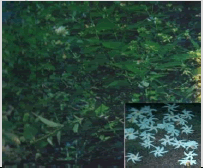 |
Samsihar | Leaves - | Used in fever and rheumatism; warm decoction in sciatica and expressed juice used as laxative, tonic and vermifuge. |
| 46 | Oroxylum indicum | Sonapatta | Root bark- | Astringent, diaphoretic, tonic, used in diarrhea and rheumatism |
| Leaves - | Burnt leaves taken with wine as a remedy for cough. | |||
| Fruits(Ten der)- | Carminative and stomachic | |||
| Seeds - | Purgative | |||
| 47 | Ougeinia oojenensis | Sandan | Bark - | Febrifuge, decoction given in highly colored urine |
| Gum - | Used in dysentery and diarrhea, and also as fish poison | |||
| 48 | Pongamia pinnata | Karanj | Root - | Juice used in fistulous sores and for cleaning foul ulcers. |
| Stem bark (fresh) | Used internally for bleeding piles | |||
| Leaves - | Used as poultice in worm infested ulcers. | |||
| Seed - | Oil used in coetaneous affections, herpes scabies and rheumatism. | |||
| 49 | Pterocarpus marsupium | Bai, Paisar | Bark - | Astringent |
| Leaves - | Externally applied in boils sores and skin diseases | |||
| Wood - | Extract used in diabetes | |||
| Gum - | Astringent, used in diarrhea pyrosis and toothache. | |||
| 50 | Pueraria tuberosa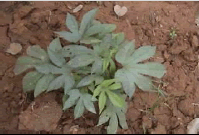 |
Patal Kohra | Root - | Demulcent, refrigerant, emetic, tonic, lactagogues. paste rubbed in rheumatism. |
| 51 | Rauwolfia spp.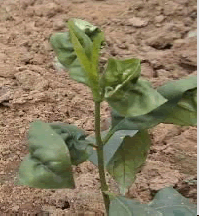 |
Sarpagandha | Root - | Febrifuge, antidote for bites of snakes, insects, etc. |
| 52 | Rubia cordifolia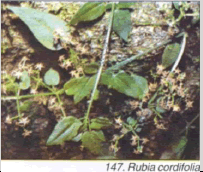 |
Jotsingh | Root - | Astringent, alterative, deobstruent and tonic; decoction used in jaundice paralysis, urinary and menstrual troubles and inflamed chest. |
| Stem - | Used in cobra-bites and scorpion string. | |||
| 53 | Schleichera oleosa | Kusum | Bark - | Astringent, used with oil in itch |
| Seed - | Power applied to remove maggots | |||
| of animal ulcers, | ||||
| Oil - | Used for cure of itch, ache and scalp and for promoting hair growth. | |||
| 54 | Semecarpus anacardium | Bhelwa | Nut - | Vermifuge and applied in uterus for abortion |
| Oil - | Used in rheumatism and leprous nodules | |||
| Gum - | Used in venereal and leprous affections and nervous debility. | |||
| 55 | Shorea robusta | Sal, Sakhua | Resin - | Astringent, detergent, digestive, aphrodisiac and used for fumigation to purify houses |
| Leaves & Bark | Burnt powder in linseed oil used for healing burns. | |||
| 56 | Smilax macrophylla | Ramdatwan | Roots - | Used in bloodless dysentery, venereal diseases (as substitute for sarsa-parilla) rheumatism and pains in lower extremities. |
| 57 | Prolifera | Ramdatwan | Root - | Used in blood dysentery and in cases of dark and reddish urine |
| 58 | Solanum nigrum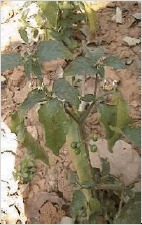 |
Makoi | Plant - | Juice used as hydrogogue, cathartic, diuretic, alterative and in chronic enlargement of liver, blood spitting, piles, dysentery etc. |
| Leaves - | Decoction used as laxative and diuretic. | |||
| Berries- | Used in fever, diarrhea, eye diseases and hydrophobia. | |||
| 59 | Solanum xanthocarpum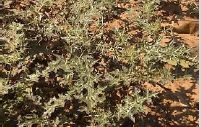 |
Rengni | Plant - | Used in diuretic dropsy and gonorrhea |
| Root - | Expectorant, antiemetic. | |||
| Leaves - | Applied locally for pains and juice with pepper taken in rheumatism | |||
| Buds & - flowers | Salt solution used for watery eyes | |||
| Berries- | Carminative and also used in sore- throat | |||
| 60 | Soymida febrifuga | Rohan | Bark - | Astringent, febrifuge, tonic; used in general debility, intermittent fever, diarrhea and dysentery. |
| 61 | Sterculia urens | Gulu, Keonjhi | Leaves & tender branches- | Mucilaginous extract used in pleuro-pneumonia in cattle |
| Gum - | Used in throat affections and as substitute for tragacanth | |||
| 62 | Stereospermum suaveolens | Papar, Panrar | Root | |
| Bark - | Cooling, diuretic, tonic | |||
| Flower - | Used in hiccough and as aphrodisiac | |||
| 63 | Tamarindus indica | Tetar, Imli | Leaves - | Infusion used in eye diseases |
| Seed - | Burnt and used as tooth-powder. | |||
| 64 | Tectona grandis | Teak, Sagwan | Leaves - | Burnt leaves in linseed oil used for curing itch. |
| 65 | Tephrosia purpurea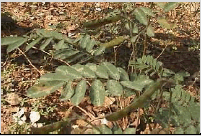 |
Sarphuka | Plant - | Tonic, laxative, anthelmintic |
| Root - | Used in tympanitis, dyspepsia and chromic diarrhea fresh root bark used in colic. | |||
| 66 | Terminalia tomentosa | Asan | Bark - | Astringent, diuretic, cardiotonic; burnt bark mixed with linseed oil used for curing itch. |
| 67 | Terminalia arjuna | Arjun | Bark - | Astringent, febrifuge, cardiotonic, used as antidote to poison |
| Kahua Leaves | Fresh juice used in ear-ache | |||
| Fruit - | Tonic and deobstruent | |||
| 68 | Terminalia belerica | Bahera | Fruit - | Astringent, tonic, laxative, antipyretic, purgative (half - ripe ones); also used in piles, dropsy, diarrhea, leprosy, biliousness, dyspepsia and headache. |
| Kernel - | Narcotic, vermifuge | |||
| 69 | Terminalia chebula | Hare | Fruit - | Astringent, laxative, alterative; used in carious teeth and bleeding gums, etc. |
| Bark - | Diuretic and cardiotonic. | |||
| 70 | Urginea indica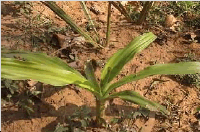 |
Jangli | Bulb - | Expectorant, diuretic and cardiac stimulant piaz, Kandri |
| 71 | Vetiveria zizanioides 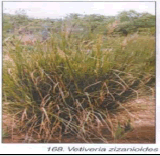 |
Khus | Used in tympanitis, dyspepsia and chromic diarrhea fresh root bark used in colic. | |
| 72 | Vitex negundo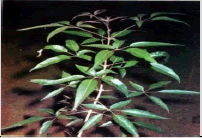 |
Sinduar | Root - | Expectorant, febrifuge, tonic |
| Leaves - | Tonic, vermifuge and used in acute rheumatism | |||
| Fruit (dried)- | Vermifuge | |||
| 73 | Woodfordia fruiticosa | Phuldhawai | Flowers (dried) - | Astringent, used in dysentery, menorrhagia,disorders of liver and mucous membrane; considered a safe stimulant in pregnancy |
| 74 | Zizyphus xylopyrus | Kankar | Leaves - | Ground and applied as poultice for cure of swelling |
The works of Hippocrates (459–370 BC) contain 300 medicinal plants classified by physiological action: Wormwood and common centaury (Centaurium umbellatum Gilib) were applied against fever; garlic against intestine parasites; opium, henbane, deadly nightshade, and mandrake were used as narcotics; fragrant hellebore and haselwort as emetics; sea onion, celery, parsley, asparagus, and garlic as diuretics; oak and pomegranate as adstringents. Most of these plant species were recorded as folklore formulation with their local names, plant parts used, quantity and mode of application for the treatment of various ailments have been enumerated, this statement was further found in agreement with Ganapaty et al. [14]. The ailments include menstrual cycle disorder, leucoderma, skin disease, blood pressure, diabetes, Malaria, snake bite, tooth ache, infertility, joints pain, contraceptive, rheumatism, jaundice, wound healing, etc. The knowledge from herbal practitioners on the abortifacient, female contraceptives and wound healing is one of the present day situations [15].
CONCLUSION
These traditional medicines of indigenous origin may be integrates with national health care system. Plants have been selected and used empirically as drug for centuries, initially as traditional preparation then as pure active principle. The study is likely to promote a rational use of botanicals and must be continued focusing on isolation and characterizing the active principles of the crude extract, its pharmacological validation, standardization and formulation. It is hoped that such ethnomedicinal study will provide important database of the different folklore formulation used locally of the study area to cure different diseases.
ACKNOWLEDGEMENTS
The author is grateful to the traditional healers for co-operation and sharing their precious knowledge and information. Author is also thankful to the forest officers of Birsa Agriculture University of Ranchi for identifying the plants and the local people for their information regarding addressing of traditional practitioners. Thanks are due to the principal Dr. J. Ahmed of Marwari College Ranchi, Prof in-charge Dr. R. L. Ram, for proving facilities and giving suggestions.
Conflict of Interest
We have no conflict of interest to declare.
REFERENCES
- GV Satyavati; AK Guptq; N Tandon. Medicinal Planta od India 2, India Council of Medical Research, New Delhi, India.-A pilot study. Afr. J. Trad. CAM, 1987; 3(1), pp. 426-456.
- A Subramoniam; P Pushpangadan. Ethnopharmarcological validation of traditional medicines. In: Glimpses of Indian Ethno-pharmacology Push pangadan P, Nyman U, George V (Ed.). TBGRI, Thiruvananthapuram, 1995; pp. 351-360.
- PG Ishwari. Studies on ethnomedicianal uses of indigenous plants of Kake Block, Ranchi Jharkhand. The Bioscan, 2009; 4(1), pp. 85-87.
- N Savithrmma; A Sudarasanamma. Endemic medicinal plants from central part of estern ghats of India. The Bioscan 2006; 1(4), pp. 51-54.
- MP Nayar. Hot Spots of Endemic Plants in India, Nepal and Bhutan, tropical Botanical Gardern and Research Institute, Thiruvanathapuram Kerala, 1996; pp. 251.
- N Nagarjun; KN Rao. The survey of medicinal plants of Tirumala, Andhra Pradesh, India, T.T. Devasthanams Publications, Tirupati,India,1990.
- SP Jain; SC Singh; J Singh; S Kumar. Ethnomedico-botanical survey of Raipur Distric, C.G. state. J.Econ. Taxon. Bot, 2003; 27(2), pp. 266-271.
- S Kumar; S Goyal; F Parveen. Ethno- medico-botany of household remedies of Kolayat Tehsil in Bikaner distric, Rajasthan, India. J. TRad. Knowledge, 2003; 2(4), pp. 357-365.
- SL Bondya; HB Sahu; AK Choudhary. Indigenous medicinal plants usd in animal therapyby the tribes of Ranchi, India. Int.J. Pl. Sc, 2008; 3(1), pp. 270-272.
- C Rabish; M Malati; SC Mandal; K Kamini; K Jyoti. Ethnomedicinal formulations used by traditional herbal practitioners of Ranchi, Jharkhand India. Journal of Traditional Knowledge, 2007; 6(4), pp.599-601.
- HH Haines. 1921-25. Botany of Bihar and Orrisa. 1(3): BSI, Calcutta (W.B).
- PP Hembrom. 1995. Adivasi-Ausadh (Horopathy). 1(7): Paharia Seva Samity. Pakur, Jharkhand.
- SC Mahto; HB Sahu. Traditional therapeutic knowledgement on common ‘sags’ among the Indigenous people of Panch- paragana (Jharkhand). Int . J. pI Sc; 2008; 3(2), pp. 95-101.
- S Ganapaty; M Ramaiah; P Ramakrishna; DN Reddy. Scientific validation and formulation of three Indian Folklore medicinal plants. J. Pharma. Res; 2013; 6, pp. 823 -835.
- S Mitra; SK Mukherjee. Some abortifacient plants used by tribal people of West Bengal. Nat. Pro. Rad; 2009; 8(2), pp. 167-171.
Open Access Journals
- Aquaculture & Veterinary Science
- Chemistry & Chemical Sciences
- Clinical Sciences
- Engineering
- General Science
- Genetics & Molecular Biology
- Health Care & Nursing
- Immunology & Microbiology
- Materials Science
- Mathematics & Physics
- Medical Sciences
- Neurology & Psychiatry
- Oncology & Cancer Science
- Pharmaceutical Sciences
